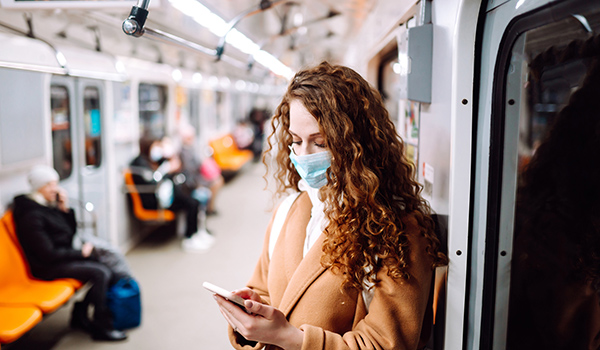
You are doing everything you can to not get infected with COVID-19. You are staying six feet away from people at the grocery store. You wear gloves when you touch any surface outside of your home. And you are diligent about washing your hands thoroughly once you get back home from being outside. But perhaps there is still a question in your mind about whether COVID can be carried on clothes and shoes.
SARS-COV-2 transmits quickly and has caused the deaths of thousands around the globe while it presents as a mild disease or not at all in certain individuals. Thus the concern that our clothes or shoes could be carrying the deadly virus is real. In this research study, researchers found SARS-COV-2 on computer mice, trash cans, hospital bed rails and that the virus was carried as far as 13 feet from patients in the air. So can the virus be carried on clothes and shoes and ultimately transmit the virus? The research studies we talk about in this post will shed light on whether or not COVID can be carried on your clothes and shoes.
Can your shoes and clothes carry COVID-19 on them?
For people who work in high risk environments such as the intensive care units (ICU) of hospitals, it is possible for their clothes and shoes to become carriers of COVID-19. In a recent study released by the CDC, researchers tested the soles of shoes, as well as masks, gloves and sleeve cuffs of the clothing ICU medical professionals were wearing. They found out that:
- 50% (half) of the samples from the soles of ICU medical staff tested positive for SARS-COV-2
- The rate of COVID-19 positivity on the masks on these medical professionals was also high
- There were “sporadic” positive tests from the sleeve cuffs and gloves that medical professionals were wearing
What does this data imply? It suggests that for people who work in high risk environments where they come close to people who have SARS-COV-2, their shoes and clothing can become infected and thus carry the virus. Therefore, for people who work in these environments, it is smart for them to practice increased hand hygiene and to disinfect their shoes (or change them) before stepping off the ICU. Note that this research study was done in a hospital and samples were taken from people who work closely with COVID-19 patients.
In another study, researchers found that SARS-COV-2 can live on plastic and metal surfaces and survive for 2-3 days. In other reports, researchers have reported that SARS-COV-2 can live on metal and plastic surfaces for up to 5 days. This is why it’s now important to touch doorknobs, traffic light buttons and any surface made of metal or plastic with caution.
What this means for you
What these research studies suggest so far is that COVID can be carried on your clothes and shoes. However most of the research done so far has not looked at how long the virus will survive on soft surfaces like clothing and shoes. This report from Johns Hopkins Medicine mentions that the likelihood of contracting SARS-COV2 from clothing is low. And the reality is that, because this virus is new, scientists are still learning a lot about it and discovering new facts every day.
Here’s the consensus so far. If you work in a hospital or close proximity to someone who has COVID-19, based on current research, you must change your clothing before you get home or to head straight to the shower and launder your clothes once you get home. If you don’t work in a high risk environment, chances are that you will not carry SARS-COV-2 on your clothes or shoes. However, if you got close to people while you were outside, taking the extra precaution to take those clothes off and wash them after you get home adds an extra layer of security that breaks the cycle of infection.
It is still important to continue to practice proper hand hygiene, to practice social distancing, to wear masks in public and take all CDC-recommended steps into consideration as we work towards slowing the spread of COVID-19. Request a demo – we look forward to showing you how to use our portal for your corporate wellness program.

